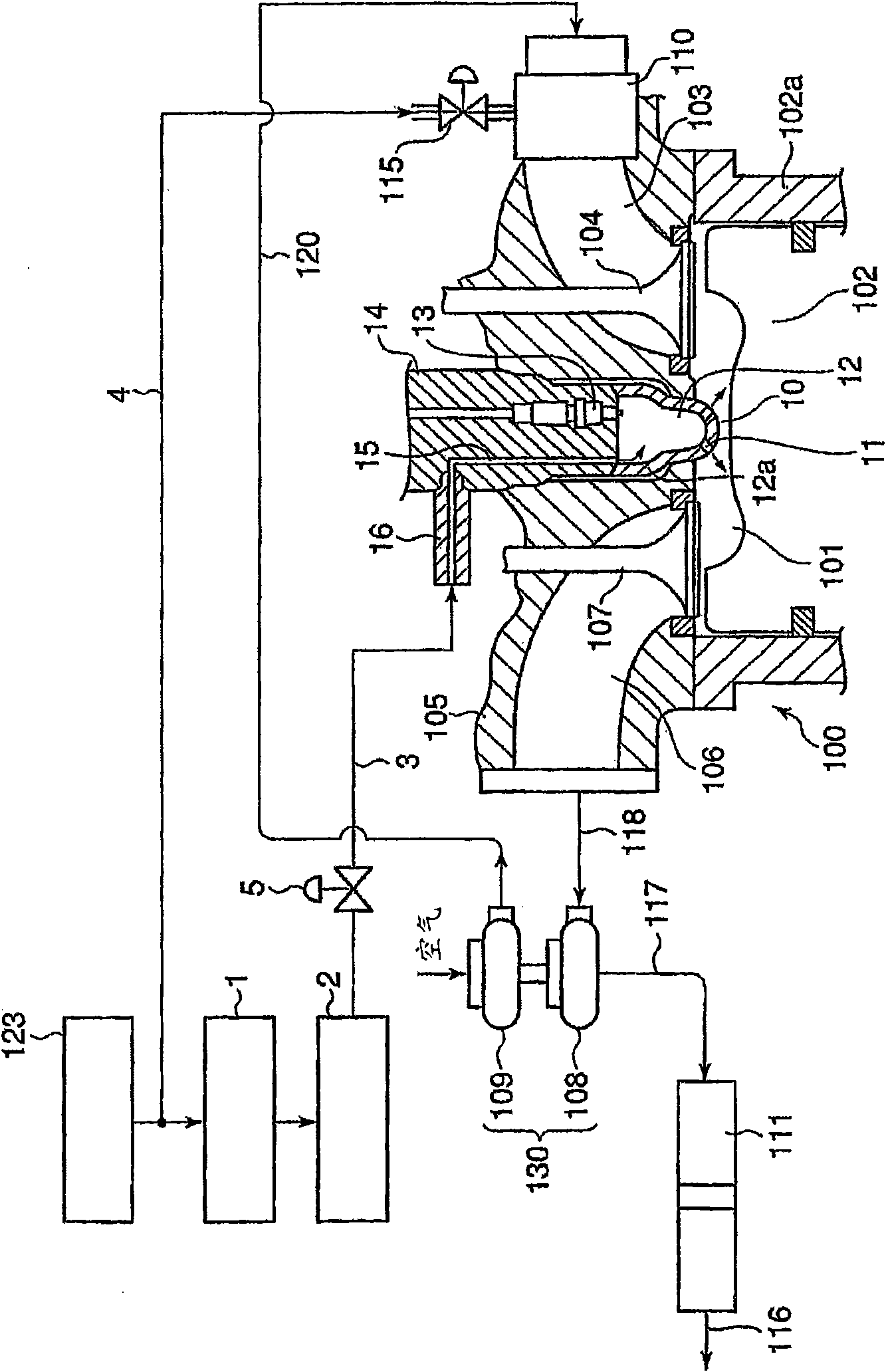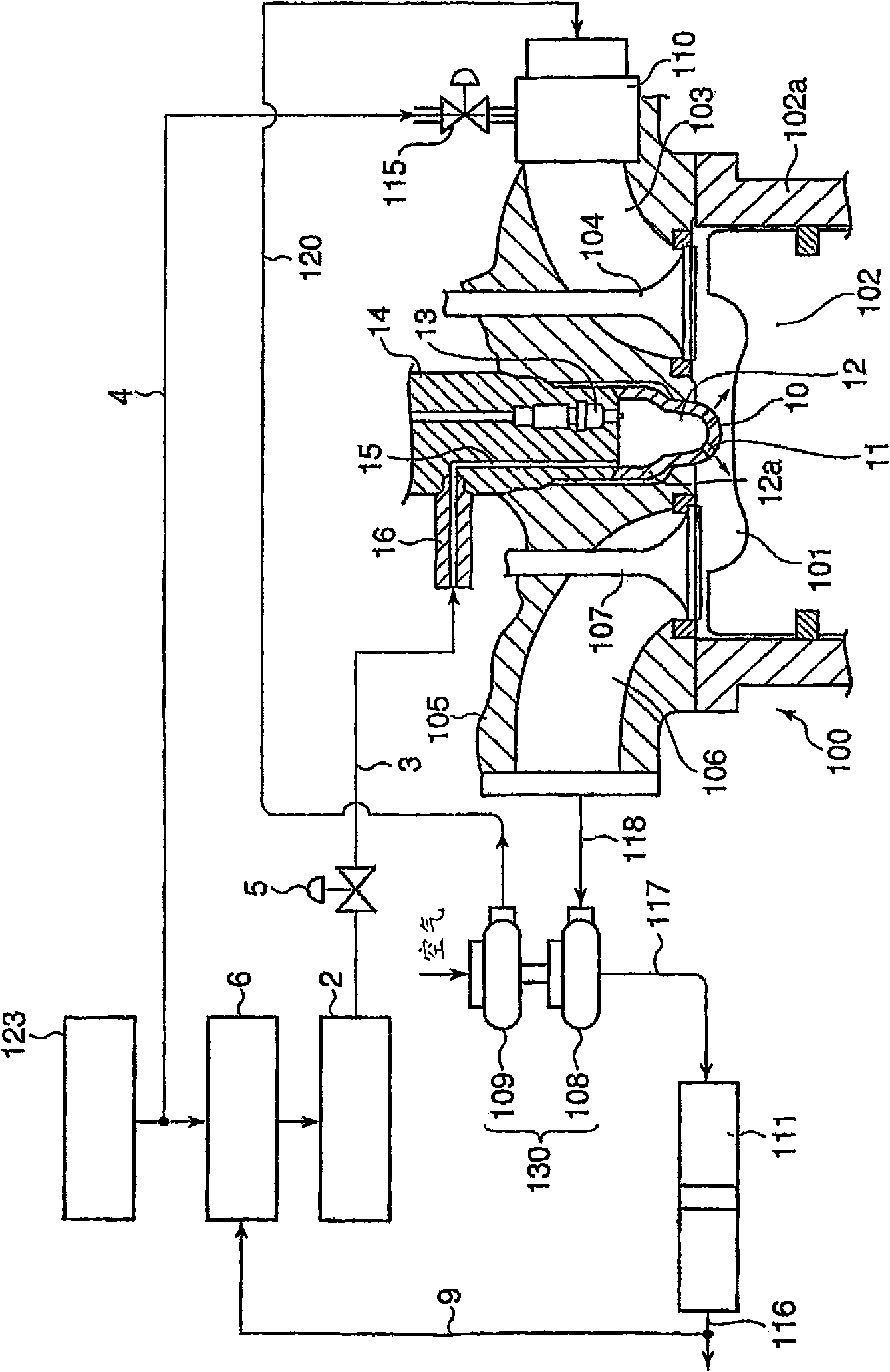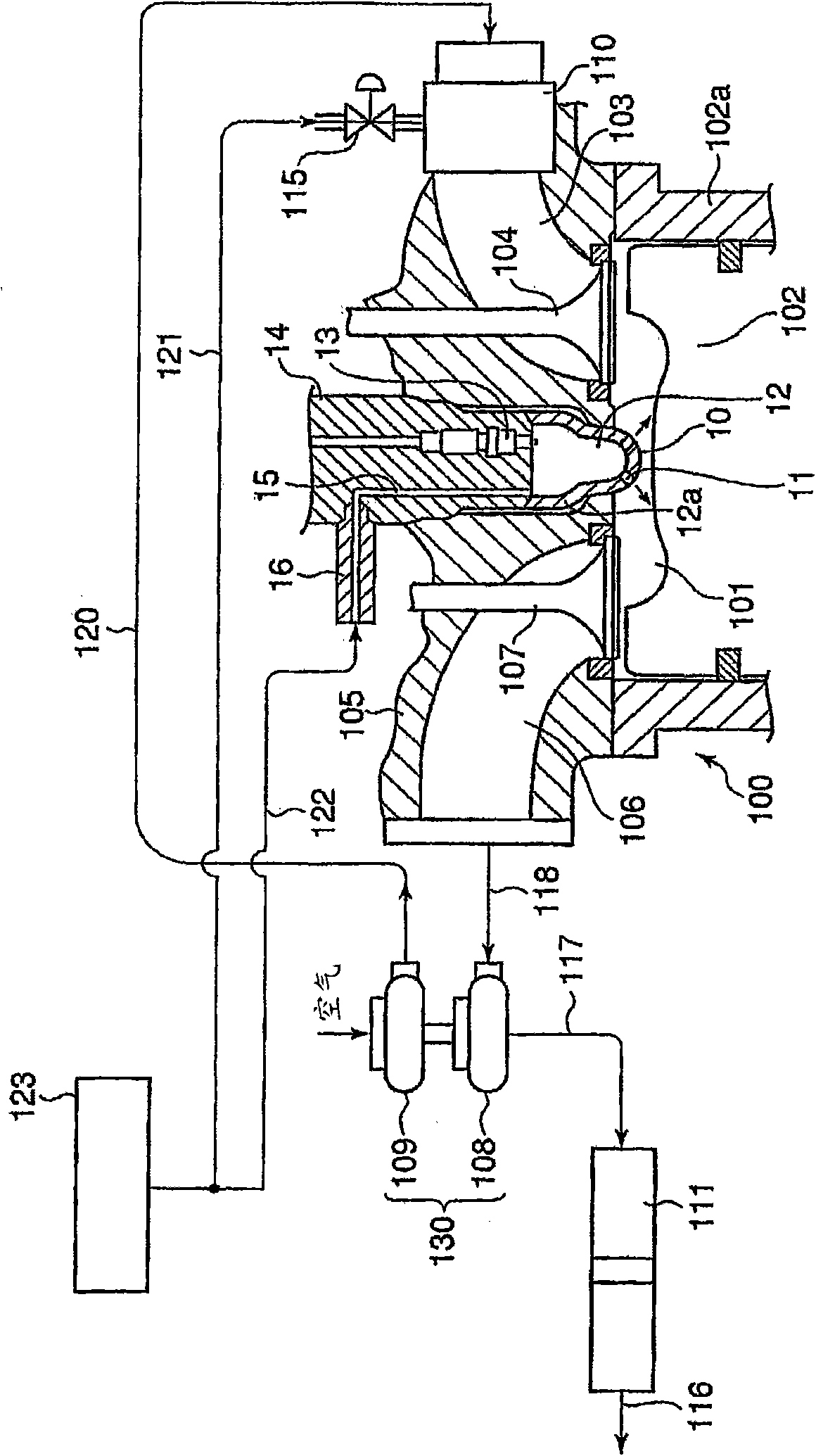Gas engine using low calorie gas fuel
A low calorific value gas and gas engine technology, which is applied to combustion engines, internal combustion piston engines, gaseous engine fuels, etc., and can solve problems that cannot be directly applied to engines
- Summary
- Abstract
- Description
- Claims
- Application Information
AI Technical Summary
Problems solved by technology
Method used
Image
Examples
no. 1 approach
[0052] figure 1 It is a block diagram showing a structure around a combustion chamber of a gas engine using low calorific value gas as fuel according to the first embodiment of the present invention.
[0053] The fuel gas uses coal mine methane and other methane concentrations as low as 50% or less, and the calorific value is only about 30% of the low calorific value gas (refer to Figure 4 ), the low calorific value gas is stored in the low calorific value gas supply source 123.
[0054] The outlet of the low calorific value gas supply source 123 is connected to the PSA processing device 1 .
[0055] In this PSA treatment device 1, implement pressure swing adsorption type treatment (PSA treatment), that is, the low calorific value gas of only about 30% of the gas engine with conventional calorific value (refer to Figure 4 ) is pressurized and made to flow through an adsorbent such as zeolite, and impurities are separated by adsorption to obtain methane gas with a concentr...
no. 2 approach
[0078] figure 2 It is a block diagram showing a structure around a combustion chamber of a gas engine using a low calorific value gas as fuel according to a second embodiment of the present invention.
[0079] In this second embodiment, the PSA treatment device 1 in the first embodiment is replaced with a temperature swing adsorption treatment device (TSA treatment device) 6 .
[0080] That is, in the second embodiment, the low calorific value gas from the low calorific value gas supply source 123 is sent to the TSA processing apparatus 6 .
[0081] That is, in this TSA treatment device 6, as mentioned above, implement the temperature swing adsorption type treatment (TSA treatment), that is, the low calorific value gas with a calorific value of only about 30% of that of a gas engine with a conventional calorific value (refer to Figure 4 ), through adsorption and separation of impurities at a temperature increase of about 200°C to obtain methane gas with a concentration of 1...
PUM
 Login to View More
Login to View More Abstract
Description
Claims
Application Information
 Login to View More
Login to View More - R&D
- Intellectual Property
- Life Sciences
- Materials
- Tech Scout
- Unparalleled Data Quality
- Higher Quality Content
- 60% Fewer Hallucinations
Browse by: Latest US Patents, China's latest patents, Technical Efficacy Thesaurus, Application Domain, Technology Topic, Popular Technical Reports.
© 2025 PatSnap. All rights reserved.Legal|Privacy policy|Modern Slavery Act Transparency Statement|Sitemap|About US| Contact US: help@patsnap.com



